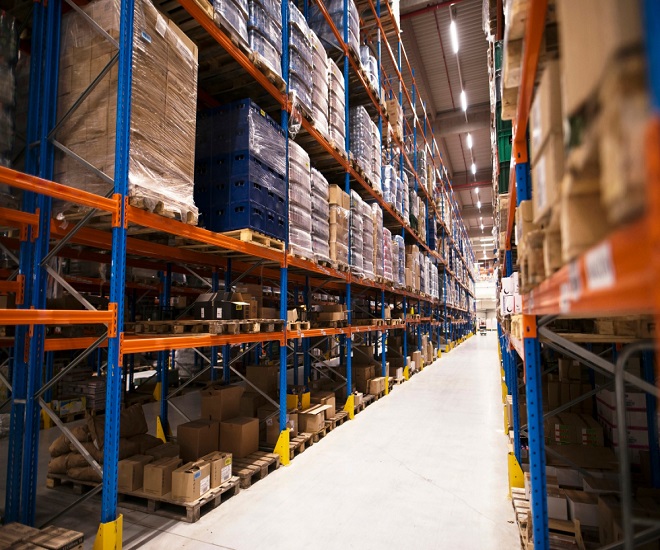The function of network security has taken center stage in the fast-paced business of warehousing, where efficiency is crucial. As warehouses become more networked via modern technologies, the security of user traffic and edge devices becomes increasingly important. This article offers a complete guide to strengthening network security in warehouses, including issues such as network performance, network management, multi-site connectivity, and cloud connectivity. Warehouse operators may provide a safe and smooth network environment by leveraging managed services and managed security solution.
Major Challenges in Warehouse Network Security
Multi-Site Connectivity: Bringing Networks Together
Many warehouses operate over many sites in the age of worldwide commerce and scattered activities. This multi-site connection adds another level of complexity to network security and administration. The issue at hand is ensuring that all locations are smoothly connected while maintaining the security framework.
Maintaining a consistent security posture across several sites necessitates a thorough strategy. Because each site may have its own network architecture, devices, and access points, similar security measures must be implemented. Virtual private networks (VPNs) and software-defined wide area networks (SD-WANs) build encrypted communication channels to offer safe connections across sites. This not only allows for data sharing but also protects sensitive information in transit.
The problem of multi-site connectivity goes beyond just connecting the dots; it also includes balancing security and accessibility. While strict security measures are required, they should not obstruct the smooth interchange of data and communication across sites. A well-thought-out plan that corresponds with the individual objectives and difficulties of each warehouse location is required to achieve this equilibrium.
Cloud Connectivity: Securely Connecting to the Cloud
Cloud connectivity is becoming a significant component of network security as warehouses use cloud-based solutions for inventory management, order processing, and data analytics. While the cloud allows for scalability, agility, and remote access, it also adds possible security flaws. Sensitive data is transferred between on-premises and cloud platforms, demanding strong encryption and authentication protocols.
The difficulty with cloud networking is guaranteeing data security in transit and at rest. Secure data transmission technologies, such as SSL/TLS encryption, protect data as it travels between the warehouse's local network and cloud servers. Meanwhile, strong access restrictions, multi-factor authentication, and demanding authorization methods guard against illegal access to cloud data.
When storing sensitive information in the cloud, warehouses must also consider data residency and compliance rules. Because various areas may have different data protection rules, warehouses must ensure that the cloud provider they choose abides by these requirements.
A Multifaceted Approach to Securing User Traffic and Edge Devices
1. Managed Services for Comprehensive Network Security: Using managed services for network security provides a proactive and comprehensive strategy to protect user traffic and edge devices. Managed security solutions grant specialized knowledge by deploying cutting-edge technologies and procedures to monitor network activity, detect abnormalities, and combat possible threats. This proactive strategy not only eliminates security breaches but also provides ongoing network optimization for improved performance.
2. Strong Network Segmentation: Network segmentation is the process of splitting a network into discrete segments in order to prevent unwanted access to important regions. Segmenting networks based on user roles, departments, or functionality in a warehouse setting might reduce the danger of lateral movement by cyber attackers. Network segmentation improves security while allowing for effective network administration by imposing access limits and separating critical data.
3. Zero Trust Architecture for Secure Edge Devices: Edge devices such as barcode scanners, RFID readers, and IoT sensors are susceptible entry points for cyber attacks. A Zero Trust architecture sees all devices as potentially hacked, requiring authentication and verification before giving network access. Warehouses that employ this strategy set rigorous access controls and greatly limit the attack surface.
4. Data Encryption: Encrypting user traffic and data as it travels over the network assures that the information remains indecipherable to unauthorized organizations even if intercepted. Encryption techniques like HTTPS, SSL/TLS, and VPN tunnels offer end-to-end data protection, which is especially important when transferring sensitive inventory data or customer information.
5. Intrusion Detection and Prevention Systems (IDPS): IDPS solutions continuously monitor network traffic, detecting and responding to abnormal or malicious activity. IDPS systems improve network security and reduce the effect of security breaches on warehouse operations by quickly identifying and mitigating possible threats.
6. Regular Software upgrades and Patch Management: Edge devices and network equipment must be updated with the most recent software patches and security upgrades on a regular basis. Cyber attackers can use software vulnerabilities to compromise the network's integrity. Patch management systems that are automated make it easier to keep all devices up-to-date-and safe.
7. Cloud Security Best Practices: When expanding network access to cloud platforms, it is critical to follow cloud security best practices. Encryption, authentication, access control, and regular security audits used inside the cloud environment protect data and prevent illegal access.
8. Employee Training and Awareness: As part of a solid network security plan, warehouse staff should be educated on cybersecurity best practices. Training courses on spotting phishing emails, using strong passwords, and following security rules help to build a human firewall that supplements technology barriers.
Using Secure Networks to Advance Warehousing Operations
Robust network security has emerged as a non-negotiable prerequisite in the era of digital warehousing, where efficiency and precision are the pillars of success. Warehouse operators can assure the smooth flow of operations while strengthening the security of user traffic and edge devices by solving the difficulties of network performance, multi-site connection, and cloud integration.
By utilizing managed services and managed security solutions, warehouses are able to keep ahead of growing cyber threats while enhancing network performance. Implementing a multi-pronged security strategy, such as network segmentation, encryption, and intrusion detection, establishes layers of defense that protect important data and systems.
The combination of technology, logistics, and security transforms warehouses into efficient, dynamic centers. As warehouses grow, a proactive approach to network security assures not just operational continuity but also customer trust and corporate resilience in an ever-changing context. Warehouses may safeguard their networks and move their operations forward by combining modern security solutions and smart collaborations with managed security providers.
FAQs
1. What are some of the security issues that multi-site connections present?
Due to differences in network architecture, devices, and access points, maintaining consistent security across various warehouse sites can be difficult. Ensuring that all locations follow consistent security principles while allowing for rapid data transmission necessitates careful planning and implementation.
2. What effect does a cloud connection have on network security?
While cloud connections provide benefits, they also raise potential security risks when data moves between on-premises systems and cloud platforms. To protect sensitive information, encryption mechanisms and access restrictions must be used to ensure secure data transfer.
3. What is the meaning of cloud connectivity in the context of warehouses?
The integration of cloud-based technologies for tasks such as inventory management, data analytics, and order processing is referred to as cloud connection. Warehouses can utilize it to access scalable resources and distant services while keeping data on cloud servers.
4. How can warehouses assure cloud data security?
Warehouses may improve data security in the cloud by adopting multi-factor authentication, leveraging encryption protocols (such as SSL/TLS), and adhering to strict access rules. Furthermore, selecting a reliable cloud provider that adheres to data protection standards is critical.
Popular Searches
Broadband Connection | Internet Providers Near Me | Internet Leased Line Connection | SD Wan Technology | Managed WiFi Services | Managed Security | Video Analytics Platform | Difference Between Broadband and Wi-Fi | What is WAN | What is Broadband | What is WiFi | What is Leased Line | What is DNS | What is SASE | What is SIP Phone
















